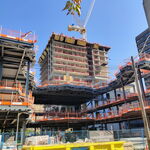crs1026
Superstar
There are too many sideroads that can be used as alternate routes, some actually leading through the First Nation itself.
A single point of blockage is easier to manage, gets better press coverage. And like teachers' strikes it's a delicate balance to manage public opinion.
- Paul
A single point of blockage is easier to manage, gets better press coverage. And like teachers' strikes it's a delicate balance to manage public opinion.
- Paul




